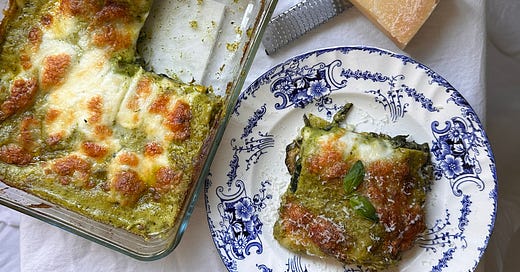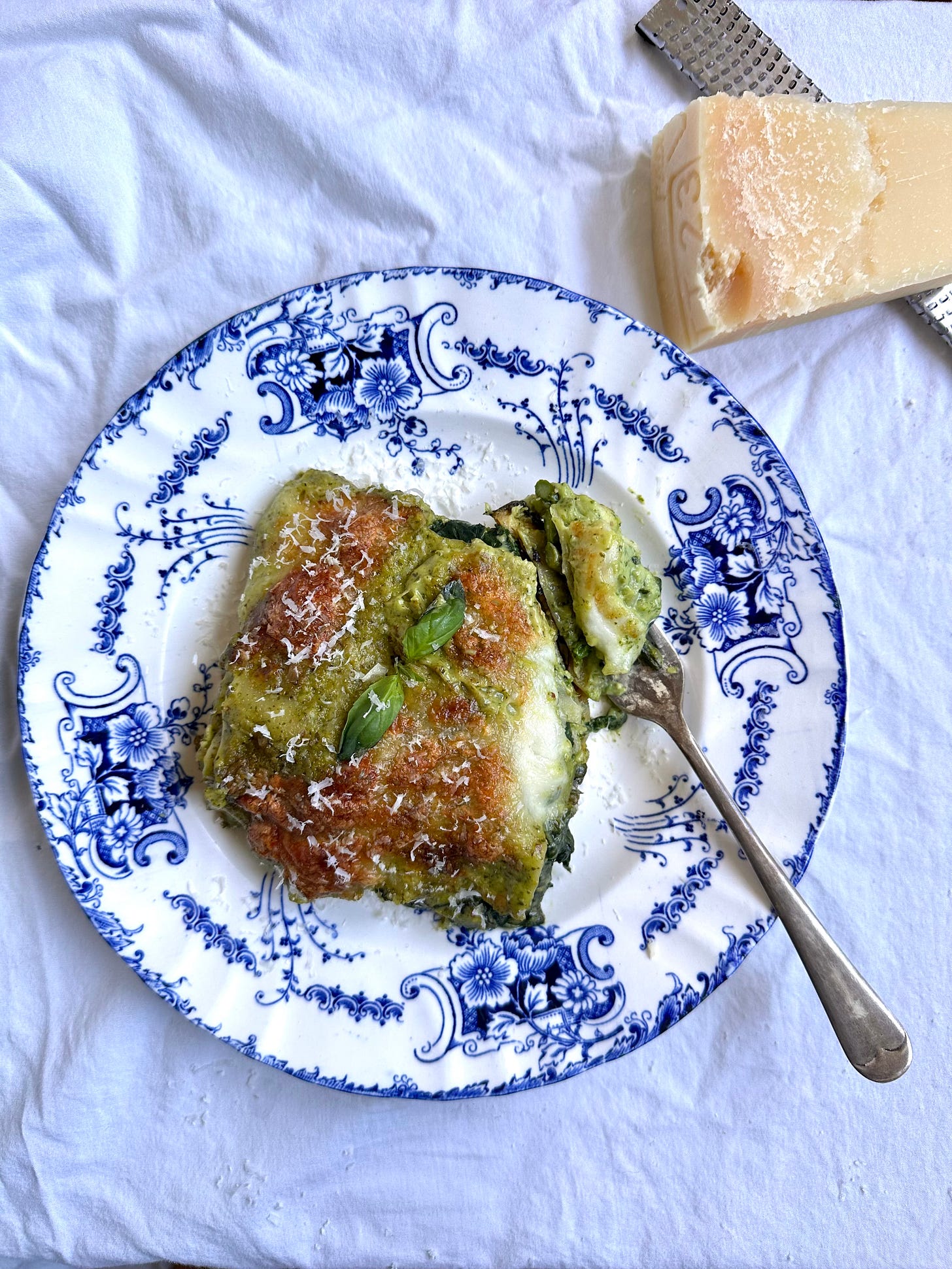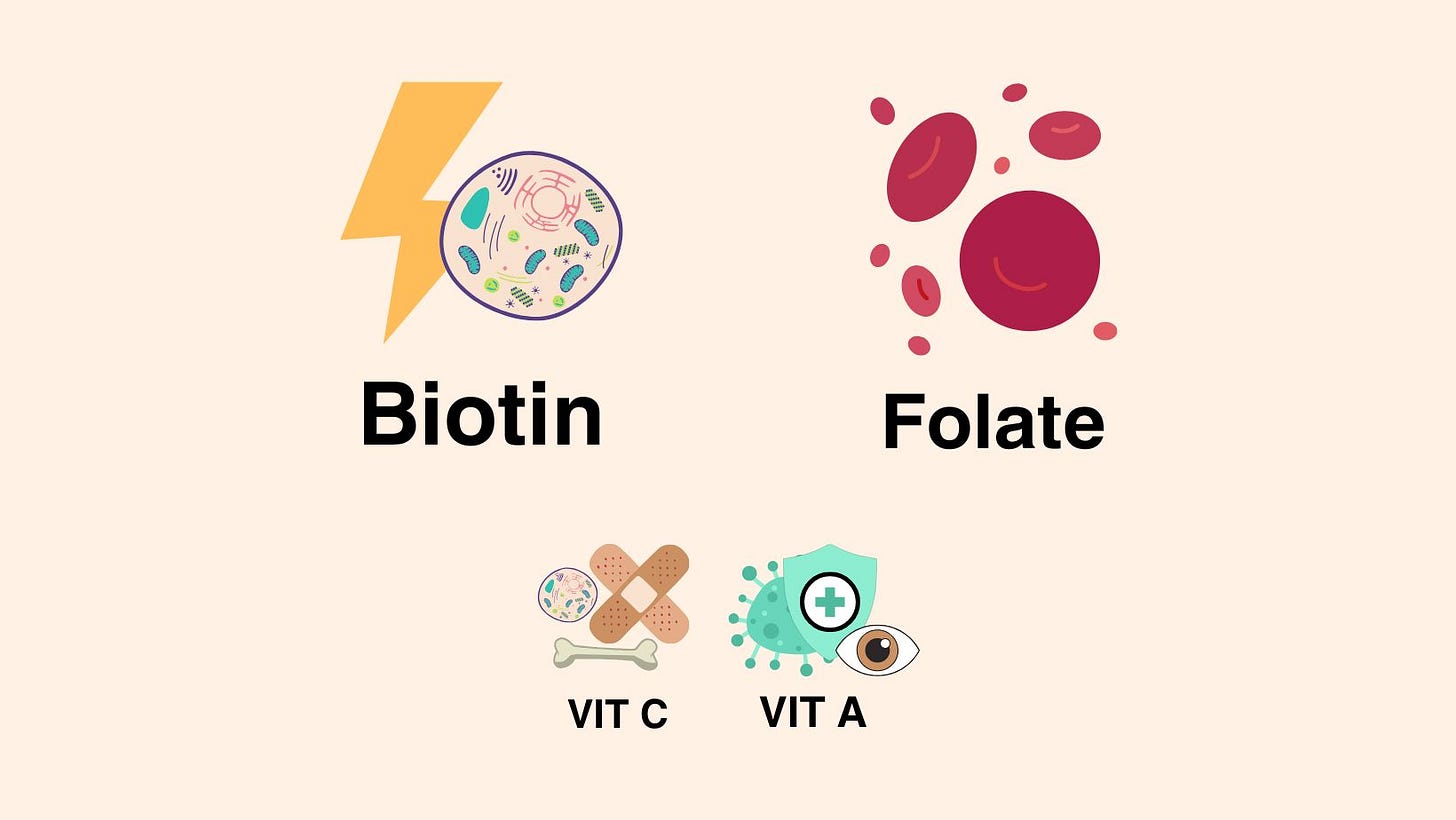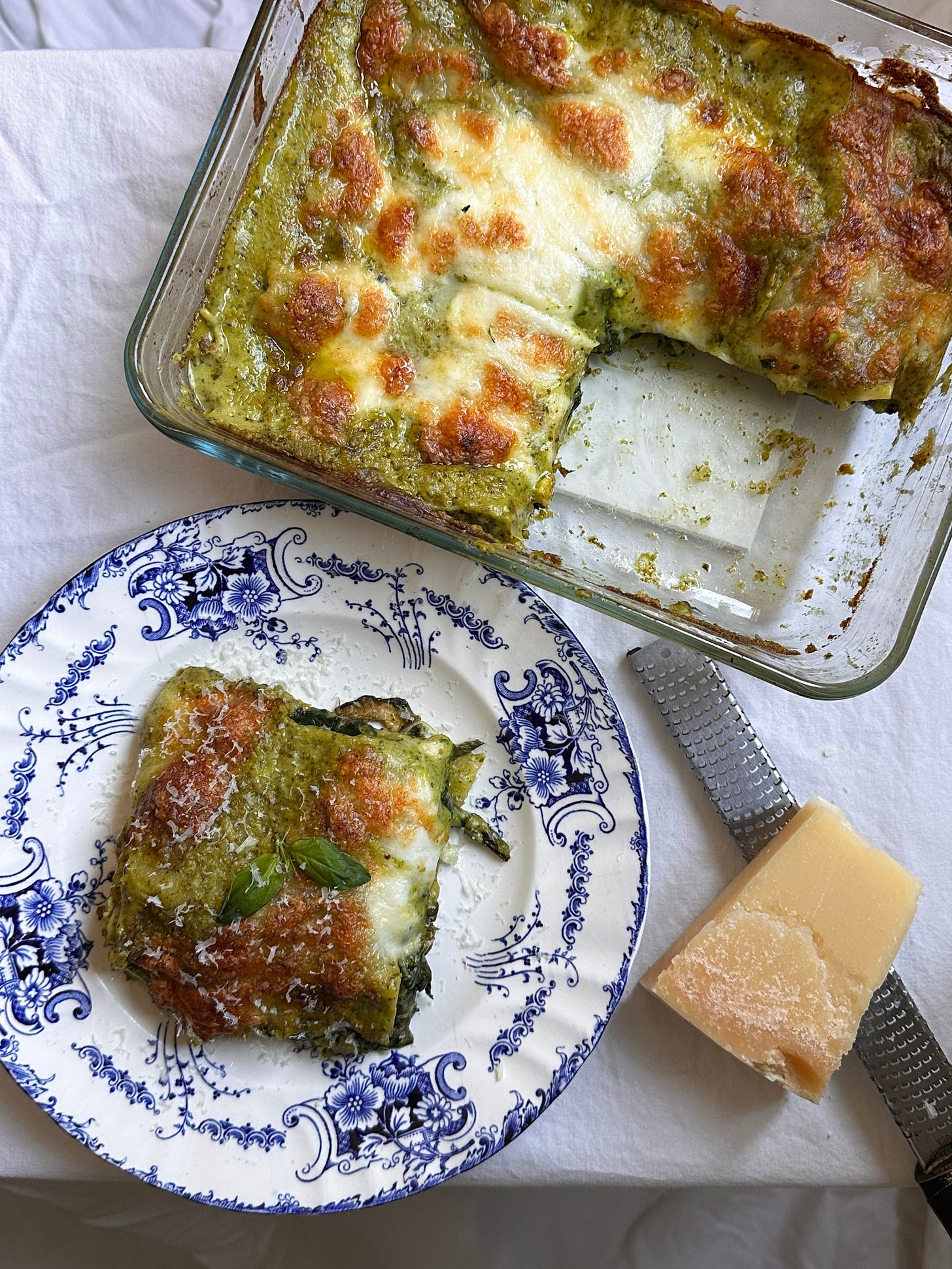April #1 - Asparagus and my green lasagna recipe
Nothing like a fridge full of spring greens and some sunshine to brighten my spirits.
HISTORY:
Asparagus has been growing wild in continental Europe for thousands of years. It was first cultivated by the Ancient Egyptians, Greeks, and Romans not only for food but also for its medicinal properties (as a diuretic). You can spot asparagus in Ancient Egyptian tombs, and Roman literature even mentions it, with Cato (234-149 BC) boasting about the vegetable’s many uses.
FUN FACTS:
The spears emerge from the ground one by one, creating the fun illusion that someone planted them secretly in the night. The white variety, however, matures under mounds of earth (no light = no chlorophyll). Originally part of the lily family, asparagus has very few leaves, relying on its photosynthetic branch instead.
A coastal plant at heart, it benefits from sodium in the soil. Historically, cultivators would sprinkle a bit of salt when planting but this practice has fallen out of favour as it prevents other crops from growing for several years.
The Ancient Romans loved asparagus so much they had servants carry baskets of it up into the Alps to be frozen for use later in the year.
Asparagus contains a unique sulphur compound called asparagusic acid, which causes the distinct smell in some people's urine we’ve all heard about.
It also contains saponins, active compounds that not only contribute to asparagus’ slightly bitter taste but also help reduce LDL cholesterol (the "bad" kind).
In France and Germany, the arrival of white asparagus season is a highly anticipated event! In Germany, it's so beloved that supermarkets even stock special machines to peel the delicate spears. A giant asparagus peeler!
HOW TO COOK THEM:
Raw: Thinly slice asparagus with a vegetable peeler and toss the ribbons into a salad, dressed with a zesty citrus vinaigrette.
Cooked: Trim off the woody ends (about 1/2 inch from the bottom).
Steam asparagus for 3-4 minutes until al dente (tender but still with a bite). Then rinse them in cold water immediately to lock in that vibrant green colour. Serve with a warm hollandaise sauce.
Slice them on the bias to pan-fry, but note that the tips will cook quicker. Either slice them thicker or add them closer to the end of cooking. These are perfect for risotto or pasta too.
Griddle or barbecue them whole for 2-3 minutes, or until charred on both sides. Toss them in a little extra virgin olive oil (EVOO), lemon juice, and parmesan.
Roast them whole with grated parmesan until crispy.
Wrap them in prosciutto and pan-fry. Then dip them straight into a runny egg yolk for a cheeky treat!
Asparagus pairs well with fish, shellfish, prosciutto (try wrapping them in like little "asparagus blankets"), and pork. They also complement other vegetables, especially potatoes, mushrooms, and peas. Nuts like hazelnuts, almonds, and peanuts work well, as do dairy products such as hard cheeses, yogurt, butter, and especially eggs. For a flavour kick, pair them with citrus, spices like star anise, mint, or best of all: truffle.
My asparagus recipes:
Green Pesto Lasagna: for paid subscribers
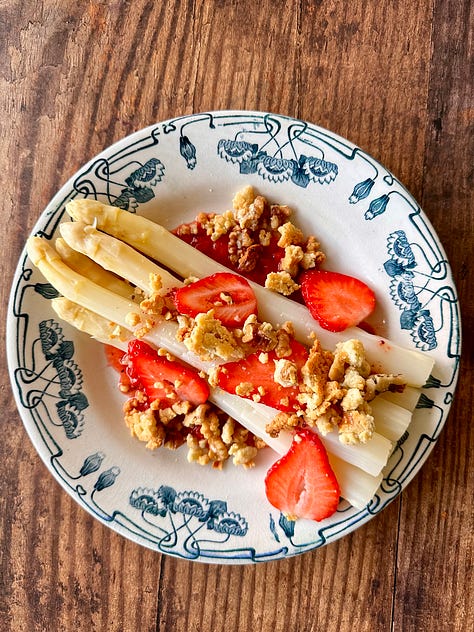
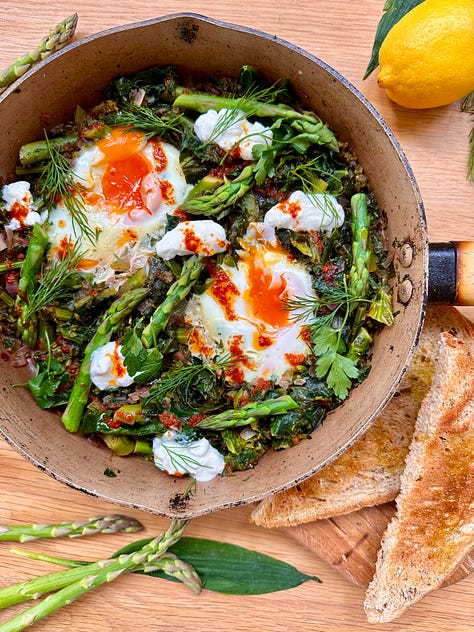
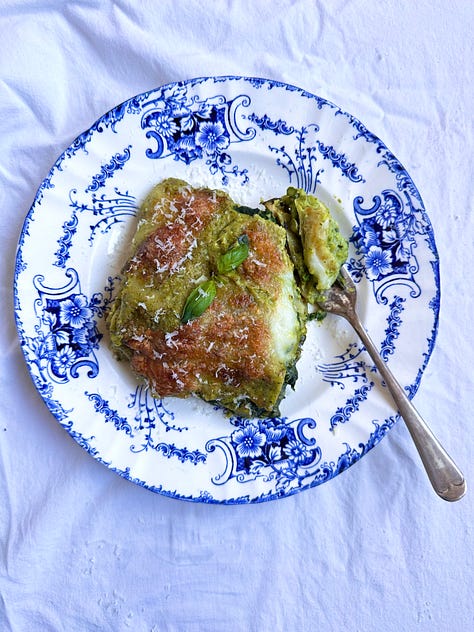
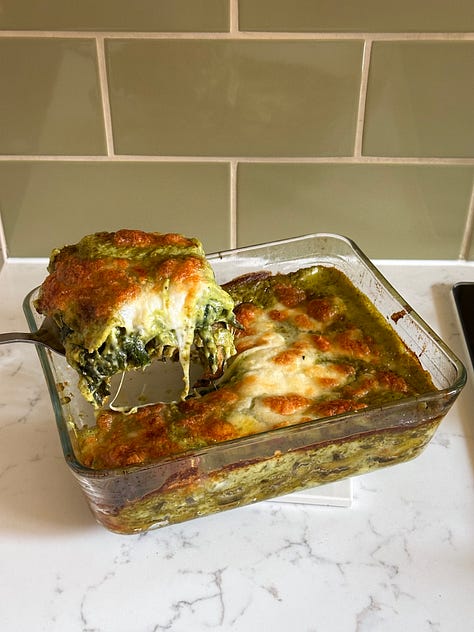
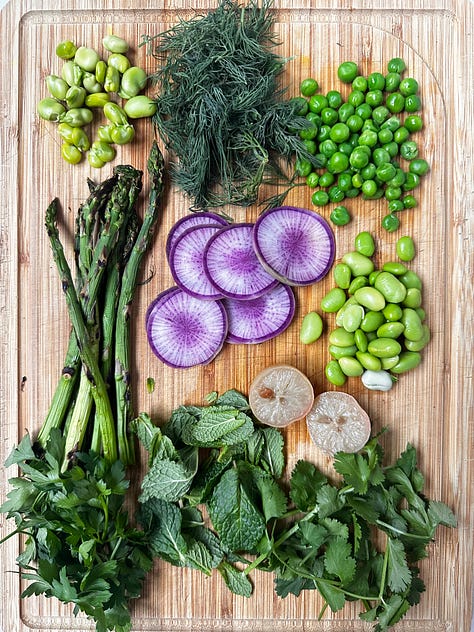
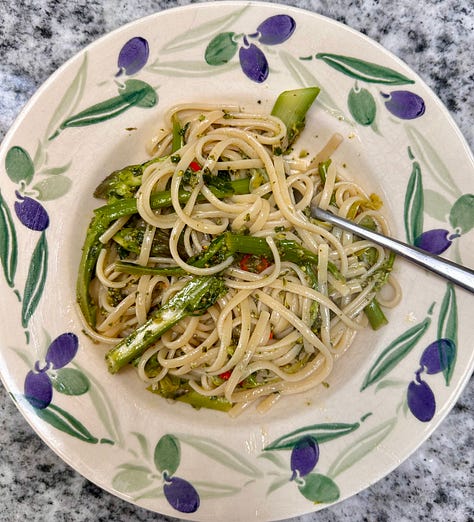
MOOD FOOD - CALM:
Asparagus is a source of asparagine, an amino acid named after the vegetable from which it was first isolated. Asparagine plays a role in maintaining motivation, cognitive function, and even reducing stress levels. It aids in the transmission of nerve impulses and has been linked to better mental clarity and emotional resilience.
Asparagus is also rich in folate, a B-vitamin known to support the production of serotonin, the “feel-good” hormone.
So, dip those asparagus spears in your soft-boiled eggs for a pure moment of wellbeing!
This week’s recipe for paid subscribers:
Pesto Lasagna Recipe
My green lasagna:
A feel-good twist on a classic lasagna recipe for spring.
Craving a comforting dish that’s bursting with springtime goodness? This easy, healthy pesto lasagna is packed with seasonal greens like asparagus, courgette, and spinach, layered between sheets of pasta and smothered in a creamy pesto béchamel. It’s a fresh twist on a classic recipe, perfect for a cozy, healthy dinner, make-ahead meal prep, or as a vegetarian centrepiece for your Easter table. Delicious, satisfying, and guaranteed to impress!
Ingredients (4 portions):
Easy pesto lasagna recipe:
1 courgette
250g asparagus
200g spinach
52g basil leaves
55g grana padano cheese
1 garlic clove
40mL EVOO
20g almonds
50g butter
50g plain flour
400mL semi skimmed milk
2 mozzarella balls
8 lasagna pasta sheets
Sea salt
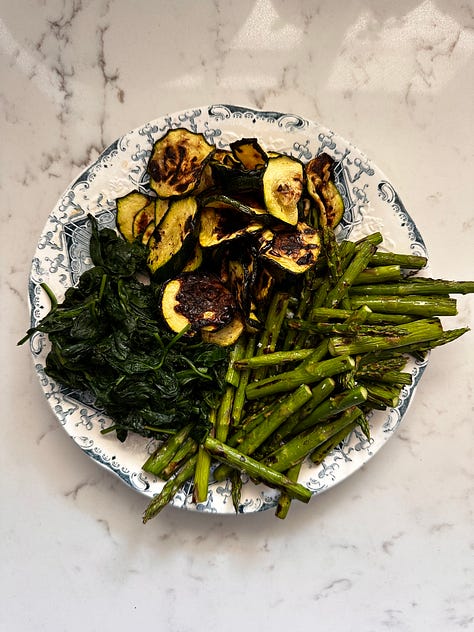

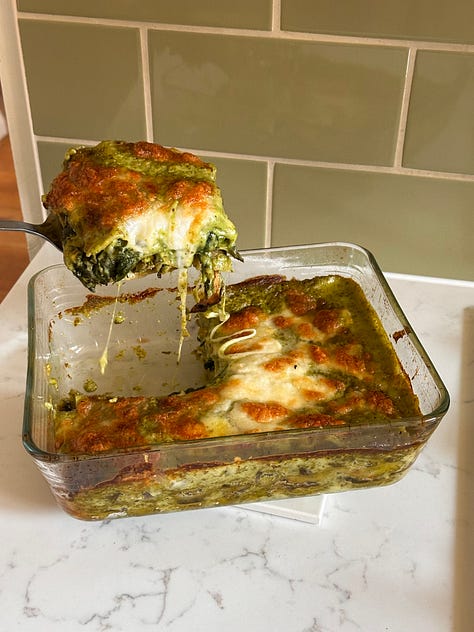

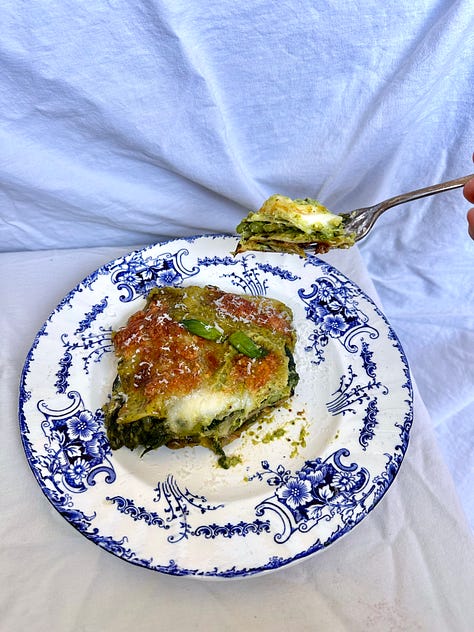
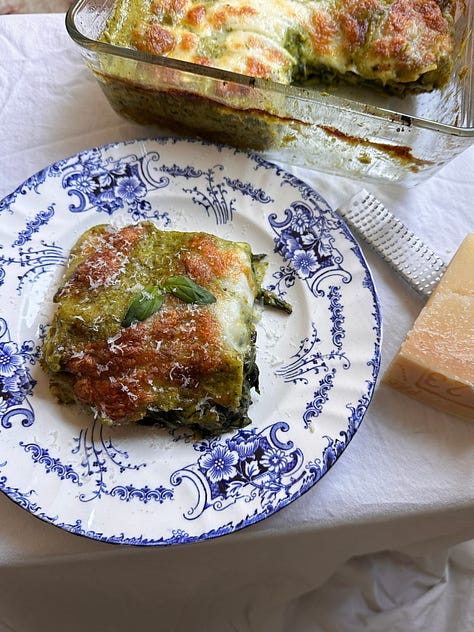
Method:
Preheat the oven to 180°C.
Thinly slice the courgette into rounds. Trim the bottom inch off the asparagus, then cut the spears in half.
Heat a griddle or frying pan over high heat.
Add the courgette slices to the pan in a single layer, avoiding any overlap. Cook for 4 minutes on one side, then flip and cook for a further 2 minutes, until nicely charred on both sides. Continue until all the courgette is cooked. Repeat the process with the asparagus, cooking for 2 minutes on one side and 1 minute on the other, until lightly browned.
Rinse the spinach in cold water, drain, and add to the hot pan. Wilt for about a minute, then transfer to a sieve. Allow it to cool before squeezing out any excess water.
Drizzle all the vegetables with a little extra virgin olive oil (EVOO) and season with a few pinches of salt.
Peel the garlic clove and cut the cheese into small pieces. Add to a food processor along with the basil leaves, almonds, EVOO, and a generous pinch of sea salt. Blitz until it forms a paste.
Pour the whey from the mozzarella packets into a jug. Dice the mozzarella balls.
Melt the butter in a saucepan over medium heat. Add the plain flour and stir immediately. Cook the roux (flour and butter mixture) for 2 minutes, then slowly pour in the mozzarella whey, followed by the milk, whisking continuously. Continue to cook the sauce until it thickens and coats the back of a spoon.
Remove the white sauce from the heat and stir in the pesto.
In an ovenproof dish, begin layering: start with a little pesto béchamel, followed by pasta sheets, more sauce, a layer of courgette, more pasta sheets, sauce, asparagus, more pasta sheets, sauce, spinach, more pasta, then a final layer of béchamel. Top with the diced mozzarella and a generous grating of Grana padano.
Bake for 40 minutes, or until the top is golden brown and the sauce is bubbling.
Serve hot, or allow to cool before slicing and storing in the fridge or freezer.
Bon appétit!
As always, if you have any questions about method, substitutes etc. feel free to send me a message!

